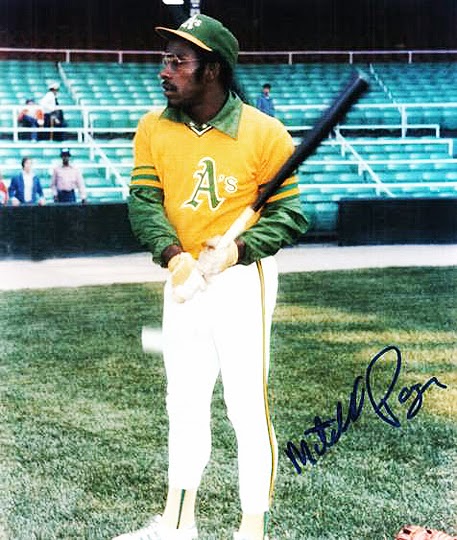OK, so here's one of those "shoulda' been" cards that REALLY should
have been: a highlight card celebrating Hank Aaron's 600th home run,
making him only the third person ever to reach that lofty number!
Aaron joined Babe Ruth and Willie Mays in the exclusive club on
April 27th, 1971 against (ironically enough) Mays and his San Francisco
Giants.
Check out my card design for a 1972 "highlight" card that should have graced this set:
Come on Topps! 600 home runs!
In the game, Aaron went 2 for 5 with a homer and three runs batted
in, while the other "living" 600-homer legend, Mays, had a banner day
himself, going 4 for 6 with two R.B.I.'s.
The game had no less than five future Hall of Famers appear, Aaron,
Mays, Gaylord Perry, Orlando Cepeda and Willie McCovey (who also
homered in the contest).
Pretty sweet!
****Allow me to run on a tangent here: Ever wonder why, way back in
the 1840's and the decades following, the early baseball Gods of Harry
Chadwick, Alexander Cartwright, etc came up with this system of a
"batting average", which would become the benchmark
of determining the "best hitter", yet for all other hitting (or even
pitching departments), it was all about total number?
In other words, if Pete Rose isn't considered the all-time batting
champ because of his hit total, then why do we celebrate Bonds (or
Aaron, who insists he's still the all-time champ because of PED's and
the "steroid age"), as the homer champ?
Just playing "Devil's Advocate" here, because I was always bothered
by Aaron's almost self-righteous claim to the homer title to this day,
even though he had almost HALF-A-CAREER'S extra at-bats than Babe Ruth!
Think about that for a second: Aaron had 755 homers in 12364 at-bats while Ruth had 714 homers in "only" 8399!!!
Add HALF of Ruth's at-bats to his career and you wonder how many homers Ruth could have hit.
Could he have reached 1000?!
If batting average was the measure for hitting, then why not a "homer average" for homers?
Just for those curious: Mark McGwire holds the record for lowest
(I.e. Best) "at-bats per home run" average for a career, hitting a homer
every 10.61 at-bats. Pretty spectacular actually.
He's followed by Ruth, Barry Bonds and Jim Thome, who sported 11.76, 12.92 and 13.76 numbers respectively.
For a single season, Bonds and his 2001 season produced the lowest
number, when he hit a homer every 6.52 at-bats (just sick), followed by
McGwire and his 1998 season when he registered a 7.27 number, and
McGwire yet again when he sported a 8.02 tally
in 1996.
See what I'm saying? This method allows us to see NOT who had the
chance of hitting more homers because of games played, at-bats, and NOT
being walked intentionally (either through IBB or just pitching around),
like Aaron, but to see who managed to hit
a homer the most times in RELATION to their CHANCES of doing so, like
batting average over just plain hit total.
Just a random thought to bring up here, but something I've been bugged about for some time.
I always remember Oscar Gamble stating that people should check out his "home run ratio" back in the day.
And he was indeed correct in doing so, since he hit a decent amount of home runs in so few at-bats!
Curious to know what some of you out there think.
















.jpg)

























